
-
Find the right food for your petTake this quiz to see which food may be the best for your furry friend.Find the right food for your petTake this quiz to see which food may be the best for your furry friend.Featured products
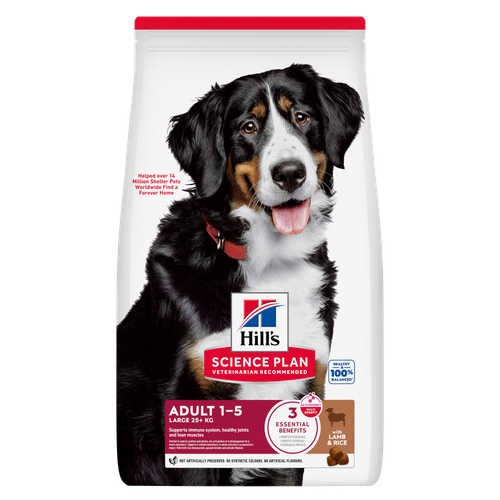 Large Breed Adult Dog Food
Large Breed Adult Dog FoodHill's Science Plan Large Breed Adult Dog Food with Lamb & Rice is a complete pet food, specially formulated with ActivBiome+ Multi-Benefit Technology.
This food is specifically designed to fuel the energy needs of large breed dogs during the prime of their life.Shop Now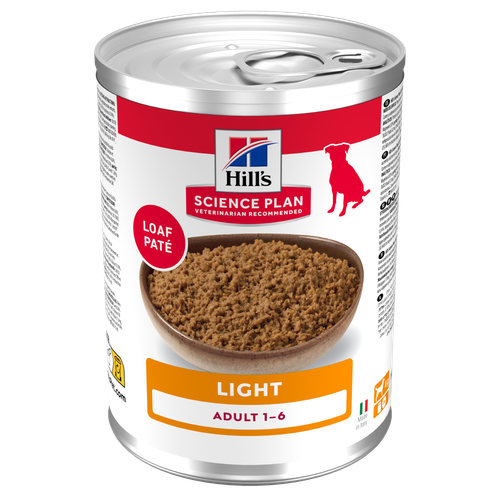 Adult Light Dog Food
Adult Light Dog FoodHill's Science Plan Light Adult Wet Dog Food is a complete premium pet food for adult dogs that tend to gain weight easily. This deliciously smooth loaf is formulated to deliver the appropriate amount of energy to support weight maintenance in adult dogs.
Shop Now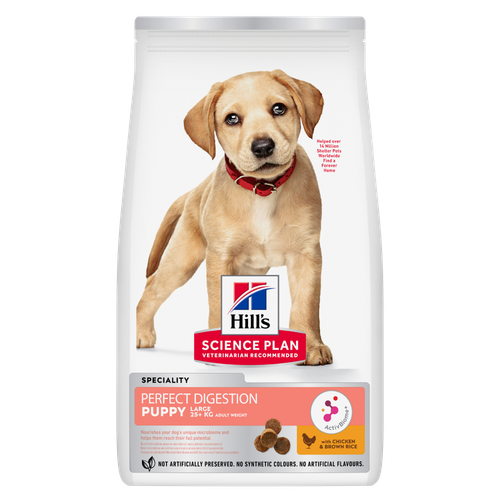 Perfect Digestion Large Breed Puppy Food
Perfect Digestion Large Breed Puppy FoodPrecisely balanced nutrition with Hill's ActivBiome+ prebiotic blend actively contributes to supporting digestive health and overall wellbeing to help your pet feel their best
Shop NowFeatured products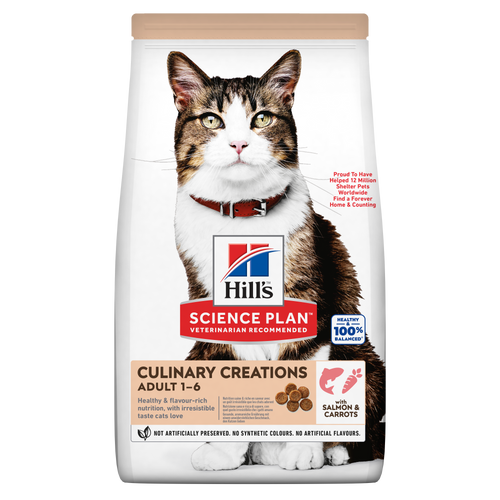 CULINARY CREATIONS ADULT CAT FOOD
CULINARY CREATIONS ADULT CAT FOODHill's Science Plan CULINARY CREATIONS Adult cat food with Salmon & Carrots was formulated to provide a great-tasting experience to cats. Its delicious flavour and texture are combine with essential nutrients to support cats' optimal health during the prime time of their life. Specially formulated with high-quality salmon protein, essential taurine for heart health & balanced minerals to support kidneys & bladder.
Shop Now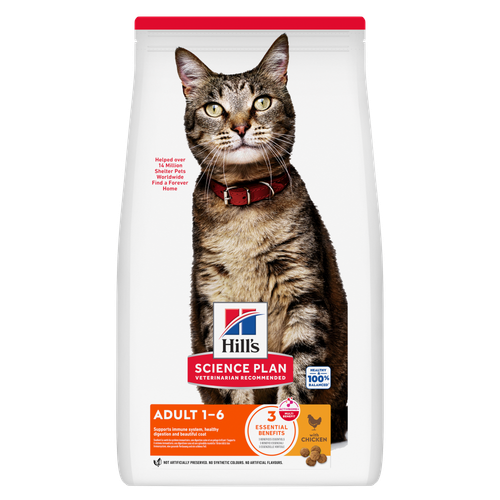 Adult Cat Food
Adult Cat FoodHill's Science Plan Adult Cat Food with Chicken is a complete pet food, specially formulated with ActivBiome+ Multi-Benefit Technology.
This food is specially formulated to fuel the energy needs of cats during the prime of their life.Shop Now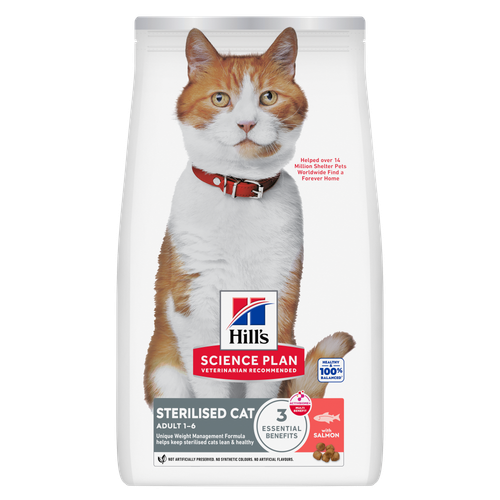 Sterilised Adult Cat Food
Sterilised Adult Cat FoodHill's Science Plan Adult Sterilised Cat Dry Food with Salmon is specially formulated with ActivBiome+ Multi-Benefit Technology. It is a precisely balanced nutrition, tailored to meet the needs of sterilised cats, to help keep sthem lean & healthy.
Shop Now -
Dog
- Dog Tips & Articles
-
Health Category
- Weight
- Food & Environmental Sensitivities
- Urinary
- Digestive
- Joint
- Kidney
Featured articles Microchipping: The Facts | Hill's Pet
Microchipping: The Facts | Hill's PetThe government has announced that as of April 2016, all dogs in the UK must be microchipped by law.
Read More Pet Nutrition: What Makes "Healthy" Pet Food Healthy? | Hill's Pet
Pet Nutrition: What Makes "Healthy" Pet Food Healthy? | Hill's PetIn people, the right diet is very important. If you are eating the wrong way for your metabolism, activity level, age and lifestyle you could end up with health issues.
Read More The Incredible Science Behind Your Pet's Microbiome
The Incredible Science Behind Your Pet's MicrobiomeLearn what your pet's microbiome is, how it contributes to your pet's gut and overall health, and why nutrition is important in maintaining healthy microbiomes.
Read More -


Over the last few decades, our understanding of what our pets need when it comes to food has greatly increased. Years ago, most people used to feed their dog tinned food and biscuits that, together, made up their entire diet. This was a bit hit-and-miss in terms of adequate nutrition, so most foods today, both wet and dry, are what we call complete and balanced. This means that they provide all the nutrients your dog needs, in the right amounts.
Because of this, pet parents now have a great flexibility about whether to feed their dogs wet, dry or a combination of the two. While feeding dry food, or kibble as it’s also called, tends to be more economical and convenient, wet dog food does have lots of benefits, too. From being a great source of necessary hydration to ease of chewing and palatability, there are plenty of reasons to choose dog wet food.
1. Hydration
Water is absolutely essential for all animals. While you should always make sure your dog has plenty of fresh water available, wet food is also a great source of water to boost their hydration. This is especially important in warm or hot weather. Dogs with medical conditions, such as bladder and kidney issues, benefit hugely from extra water intake too, and wet foods can really help.
2. Variety
Complete wet and dry foods are equally healthy for dogs. However, wet foods can offer more variety. Wet foods may be solid, loaf-type tinned food, chunks in gravy, or delicious stews with ingredients like vegetables and meat. There are a wide range of flavours on top of this, providing lots of variety to keep your dog’s diet interesting.
3. Appealing smell
While lots of dogs relish eating kibble, wet foods tend to have a great smell that can help encourage those more fussy eaters to tuck into their food. Dogs that have been ill or are recovering from surgery may not feel much like eating and wet food can make all the difference for getting them back on their feet again.


Tasty Tips
4. Easier to chew
Some pet parents shy away from offering canned dog food to their pets. They're worried they aren't giving their dogs adequate nutrition, or that wet food isn’t good for their dog's teeth. This is somewhat of a misunderstanding; the RSPCA says that dry food may have a slight advantage over wet food because it has a mild cleaning effect on the teeth, but there is nothing to suggest that wet food is bad for your dog’s dental health. A good-quality wet food can offer your pet balanced nutrition to support and maintain their health throughout all stages of life. In fact, for older dogs with tooth or gum issues, wet food may be easier or more comfortable to eat than dry.
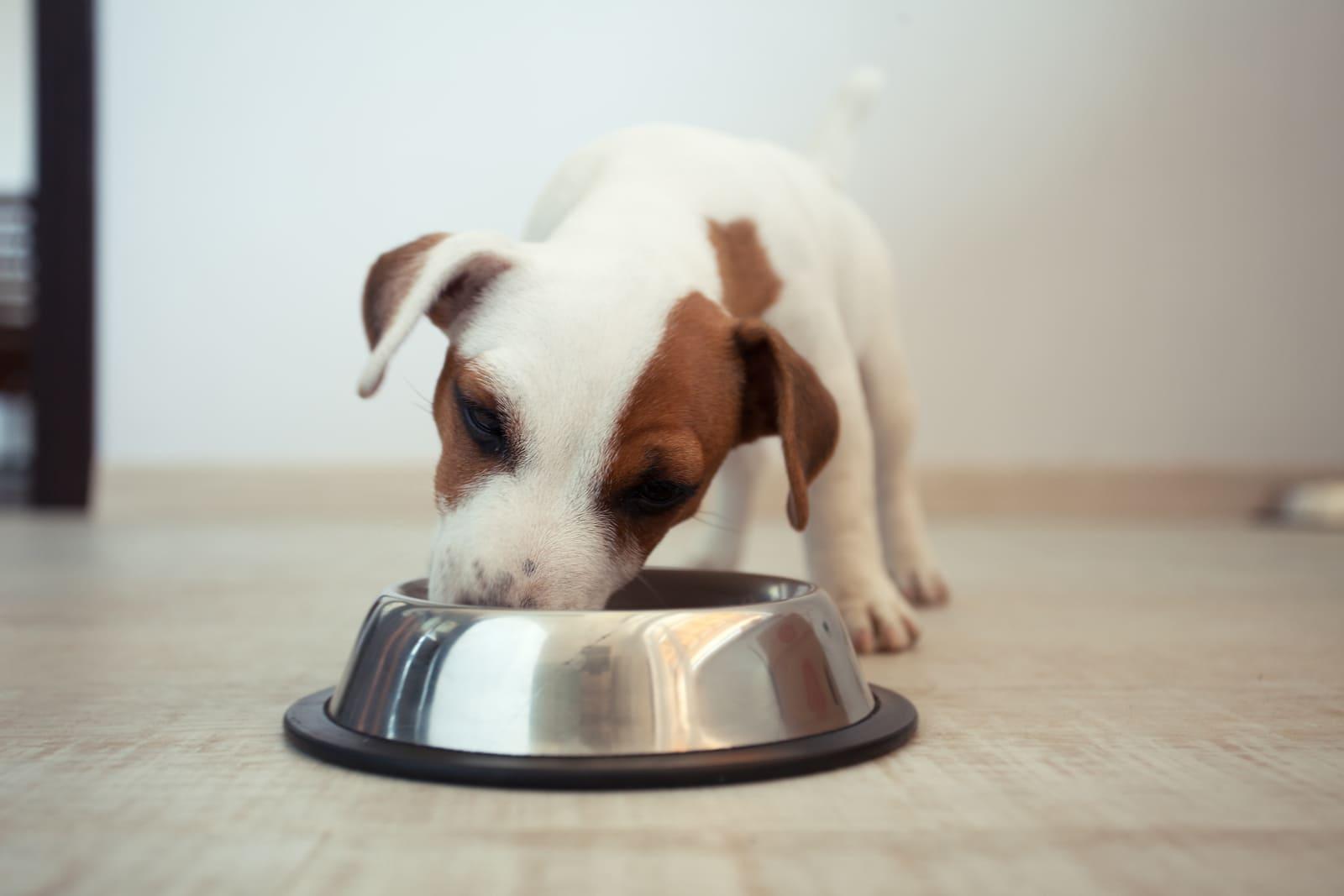
5. Keeps well
Wet food in unopened pouches and cans can have a long shelf life and may be easier to store than large bags of kibble. If your dog doesn’t need a whole pouch or can in one meal, always remember to refrigerate what’s left. This will usually last up to three days in the fridge but always check it for signs of going off before feeding. Most animals prefer the food to be back at room temperature or even just slightly warmer than fridge temperature before eating it.
When to serve dry food
While balanced wet and dry food are equally nutritious, there can be reasons you may want to offer your dog a dry food. Dry food can be easier to portion, especially when you’re using a gram scale to weigh the food. Dry food can be purchased in larger bag sizes too, which can be more convenient for pet parents with large breed dogs. And if your dog is a grazer, dry food won’t spoil if not eaten and left out. Kibble is also easy to use in food puzzle toys to enrich your dog's life and satisfy them without overfeeding.
Why not both?
As long as the food is complete and balanced, it’s up to you whether you feed your dog wet food, dry or a mix of both. Some pet parents choose to feed dry kibble in the morning and offer their dog a meal of wet food at night (or vice versa), while some prefer to put the wet and dry together in the same bowl. This helps encourage some dogs to eat kibble if they won’t eat it on its own and gives your dog a variety of textures at every meal. Remember to treat a mixed bowl the same as wet food and make sure that anything that’s left is discarded, especially during warmer weather when the smell of wet food may attract flies. Finally, remember to always feed for your dog’s ideal weight. Mixing wet and dry can make it trickier to calculate feeding amounts, so always ask your vet if you’re unsure.


One of our staff authors prepared this article for you
Related products

Hill's Science Plan Large Breed Adult Dog Food with Lamb & Rice is a complete pet food, specially formulated with ActivBiome+ Multi-Benefit Technology.
This food is specifically designed to fuel the energy needs of large breed dogs during the prime of their life.

Precisely balanced nutrition with Hill's ActivBiome+ prebiotic blend actively contributes to supporting digestive health and overall wellbeing to help your pet feel their best

Hill's Science Plan Light Adult Wet Dog Food is a complete premium pet food for adult dogs that tend to gain weight easily. This deliciously smooth loaf is formulated to deliver the appropriate amount of energy to support weight maintenance in adult dogs.
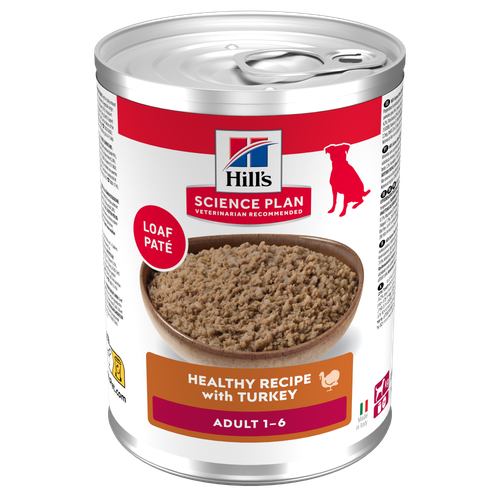
Hill's Science Plan Adult Wet Dog Food with Turkey is a complete premium pet food for adult dogs from 1 year. This deliciously smooth minced turkey loaf is formulated to deliver the appropriate amount of energy to support the needs of adult dogs.
Related articles
Discover the causes, signs, and treatments of kidney disease in dogs and find methods of supporting your dog's kidney health. Learn more at Hill's Pet.

Dog obesity is a significant problem - learn more about helping your dog become trimmer and healthier through improved nutrition.

Learn to see the signs of an upset stomach in your dog, understand the triggers and explore some possible solutions.

Gurgling tummies in turmoil are not good news for pets. Owners who have to clean up the unfortunate consequences, digestive problems are one of the rare downsides to owning a pet.

Put your dog on a diet without them knowing
Our low calorie formula helps you control your dog's weight. It's packed with high-quality protein for building lean muscles, and made with purposeful ingredients for a flavourful, nutritious meal. Clinically proven antioxidants, Vitamin C+E, help promote a healthy immune system.
Put your dog on a diet without them knowing
Our low calorie formula helps you control your dog's weight. It's packed with high-quality protein for building lean muscles, and made with purposeful ingredients for a flavourful, nutritious meal. Clinically proven antioxidants, Vitamin C+E, help promote a healthy immune system.

